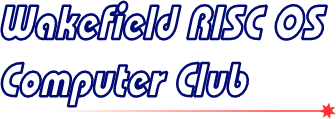A Brief History of RISC OS
The origins of RISC OS can be traced back to the operating system used on Acorn’s range of 8-bit computers: the BBC Micro and Master series. When these came to be replaced in the second half of the 1980s, the operating system eventually chosen was called “Arthur”. It borrowed heavily from the old 8-bit system in many places, and the similarities can be seen in areas such as system calls, and the way that the text and graphics are accessed.
Although Arthur was a step forward, it failed to do the new machines justice. Despite the presence of a primitive graphical user interface (GUI), it could only handle one application at a time and most interaction was via the command line. Users and developers alike seemed disappointed, and Acorn worked hard to produce an upgrade.
When “Arthur 2” was released in 1989, it had been renamed and was known as RISC OS 2. The new system was a marked improvement on what had gone before: not least, it had ditched the command line for the GUI (known as the “WIMP” or “Desktop”) as the main means of interacting with the system. The system could now run more than one application at a time (“multitasking”), making it extremely versatile.
Early systems
RISC OS 2 provided many features that used the graphical and sound capabilities of Acorn’s new 32-bit machines. 256 colours could be displayed on the screen at once, there were eight channels of stereo sound available, and text could be displayed on screen using anti-aliased fonts to reduce the jagged appearance of the characters.
The early Archimedes machines which had shipped with Arthur (the A300 and A400 series) were updated to use RISC OS, and new systems (the A540 and A3000) were launched with the new OS as standard. As time progressed, further small improvements were made: the most notable was the arrival of an outline font manager, which provided fully scalable text at any size and resolution, both on screen and on paper.
The arrival of RISC OS 3
By 1991, RISC OS was starting to look a little limited again, and users were also waiting for new hardware. Acorn’s answer came with the new A5000, which launched with RISC OS 3.0.
For users at the time, the new OS was a massive step forward. Alongside many improvements behind the scenes which helped software developers, the new system came with a number of useful applications built into ROM (including Paint, Draw and Edit), support for outline fonts as standard, and improved ways to configure the system.
The new OS was not bug-free, however, and soon RISC OS 3.1 was released – both as an upgrade for owners of the A5000 and for anyone using Arthur or RISC OS 2. Fairly priced and with clear benefits, many users made the upgrade and RISC OS 3.1 soon became a standard base on which software developers relied.
After the A5000, Acorn released a number of machines based on RISC OS 3. The A3010, A3020 and A4000 were entry-level systems compared to the A5000, and the A4 was a laptop using a modified version of the OS with support for the LCD screen and battery management requirements.
The RiscPC and the late 90s
By 1994, rumours of a new Acorn machine were rife, and it finally appeared in the form of the RiscPC. Compared to what had gone before, it was very advanced: it could display 16 million colours (not just 256 from a total of 4096), and had support for up to 256Mbyte of memory (the most that the old systems could handle was 16Mbyte). As a result, a new version of RISC OS was required to support the hardware.
Acorn’s answer was RISC OS 3.5 – the numbering reflected the fact that, aside from hardware support, it contained few significant differences from its predecessors. The desktop had been cosmetically improved, with the arrival of outline fonts in windows and their titles, but aside from this most of the changes were only visible to software developers.
Over the life of the RiscPC, Acorn released RISC OS 3.6 and RISC OS 3.7 as updates to the hardware and processor dictated it, but little else changed. The new releases included support for StrongARM processors, bigger hard discs, CD ROM drives, and the new-fangled internet, as well as for the new A7000 and A7000+ series of computers which became the entry-level RISC OS machines of the late 1990s.
Network Computers and set top boxes
As part of their attempts to diversify during the 1990s, Acorn developed a number of television set top box and “Network Computer” designs. These were intended in the main to be operated discless, with just an OS in ROM and some RAM for local storage (everything else being stored on a remote server).
To this end, a parallel development of RISC OS started, which was known as NCOS. Although similar to its desktop cousin, NCOS contained facilities aimed at making it more usable on low resolution display screens (such as televisions) and without the benefit of a keyboard and mouse.
RISC OS post-Acorn
By 1998, it was widely known that Acorn were working on a new machine, called the RiscPC 2 or “Phoebe”. Despite some public flirtations with other operating systems in the press, the new machine was destined to run RISC OS and by the time that Acorn was split up in September 1998, development of a new version known as RISC OS 3.8 was well underway. This was based on the previous desktop system, with the changes made to NCOS merged back in.
A month before Acorn closed their workstation division, a beta version of RISC OS 3.8 was released to third-party developers, to allow them to test against the new system. When the division closed, Phoebe was cancelled and development of the OS reduced almost to nothing. In early 1999, what remained of Acorn changed its name to Element 14.
RISC OS has always boasted a large band of dealers and third-party software and hardware developers, and by now these had grouped together to try and take on development of the desktop version of the OS. In March 1999 a new company called RISCOS Ltd secured the rights from Element 14, received the source code and started work on polishing RISC OS 3.8 for release as an upgrade for RiscPCs.
By late April, Element 14 had been broken up and ownership of RISC OS had passed to Pace, who continued development in parallel with RISCOS Ltd for use in their set top boxes. This work was in the main carried out by the same engineers who had worked on the OS at Acorn. By July, RISCOS Ltd had released RISC OS 4.02 to RiscPC owners, and some of the changes they had made were rolled back into the Pace version of the OS.
The Select Scheme, Iyonix PC and RISC OS Six
For the next couple of years, development of RISC OS continued in parallel at RISCOS Ltd and Pace, each for their respective market. Due to the original license secured from Element 14, some of the changes made by RISCOS Ltd in the early years were passed back to Pace and got included into their version.
By 2001, RISCOS Ltd had started work on the Select Scheme, aimed at improving their strand of the OS and supporting new hardware such as that from RiscStation and Microdigital. At Pace, the OS (which had always relied on the fast-disappearing 26-bit addressing mode of early ARM chips) was being made compatible with the more modern 32-bit only ARM processors.
RISC OS dealer and developer Castle Technology had bought the rights to continue manufacturing the RiscPC from Element 14. This had resulted in the Kinetic RiscPC, which used RISCOS Ltd’s RISC OS 4.03, but by now they were looking at creating their own new design of desktop computer. Since they planned to base it around an XScale processor, which only supported 32-bit addressing, they went to Pace and licensed their version of RISC OS. In late 2002, the Iyonix PC was released, running the 32-bit RISC OS 5.
Development of RISC OS 4 continued at RISCOS Ltd, resulting in the release of RISC OS 4.39 and the subsequent 32-bit conversion to allow this strand of the OS to run on the 32-bit-only ARM9-based A9home computers from Advantage 6. This became known as RISC OS Six – the first version of which was released in 2007.
New hardware and an Open OS
On the Iyonix PC, updates to the OS continued until the arrival of RISC OS 5.13. By this point, Castle Technology had bought RISC OS from Pace, and now began to look at what to do with it. In 2006 a company called RISC OS Open Ltd was formed to oversee the shared source release of RISC OS 5 – a process that was largely complete by 2010.
The opportunity for anyone to work on RISC OS 5 spurred on a number of ports to new hardware, including development boards such as the Beagleboard, PandaBoard and Wandboard. In 2012 the OS was ported to the then-new Raspberry Pi, and it continues be updated for new versions as they become available. More recently, dedicated ARM-based motherboards have been developed, and the OS has been ported to work on the PineBook. A version for the RiscPC provides support for emulators like RPCEmu, making it possible to use RISC OS 5 on top of other systems.
In late 2018, a new company called RISC OS Developments purchased Castle Technology, and with it took ownership of RISC OS itself. The shared source licence was replaced by the properly Open Source Apache Licence on the weekend of the 2018 RISC OS London Show. Developments continue, with nightly-builds of the source for those wanting the latest features (and bugs!). Stable releases are timed to come out every couple of years.
In contrast, development of RISC OS Six seemed to falter as the 2010s began. RISCOS Ltd was dissolved in 2014, with RISC OS 4 and Six passing to 3QD Developments who also develop the Virtual Acorn emulator system. These days, this branch of the OS mainly survives under emulation and the latest version is RISC OS 6.20 – which was released back in 2009.
Further reading
For space reasons, this guide to the history of RISC OS is only an introduction. Much more detailed information can be found on the following sites.
If you have any questions about the RISC OS operating system, why not drop us a line?







